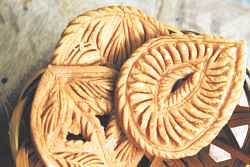| Home - Back Issues - The Team - Contact Us |
 |
| Volume 10 |Issue 48 | December 23, 2011 | |
|
|
Cover Story
A Delectable Tradition To Bangladeshis, pitha is not simply a food item; it is an occasion in itself. It is our way of expressing joy at the arrival of the new harvest and also of celebrating our relationships with our families, friends and neighbours. It is an art form and an age-old tradition. Pithas have survived the onslaught of urbanisation and globalisation, although it is no longer the delicacy that brings the whole neighbourhood together the way it once did. With the commercialising of the pitha tradition, there is the concern that pithas will become standardised products and the art of pitha-making will slowly fade away. Anika Hossain and Sushmita S Preetha When Noor Banu was five years old, she discovered that her favourite time of the year was winter. Amidst all her memories of the winters spent in her village in Narsindi, her fondest memory is of waking up at four in the morning to the heavenly smells of the much awaited winter delicacy– her mother's homemade pithas. Seven decades have passed since then, but she still remembers her mother sitting up all night, once a year, to make pitha for their friends and relatives around the village. “It was to celebrate the fresh harvest my father brought home from the fields. My mother sat with 10 kgs of rice and 10 kgs of gur (molasses) and made bhapa and chitoi pithas all night.” Noor Banu sat next to her mother near the clay stove, basking in the warm glow emanating from the flames within and watched as each perfectly round and delectable pitha was carefully baked.
The life of the average Bangladeshi is interwoven with innumerable customs and traditions, so much so, that most become a part of everyday life. However, some traditions, although passed on for centuries, still manage to retain their charm and excitement. Pitha making is one such tradition. In rural areas, in particular, pithas are not just food items; they signify celebration, joy and festivity. During Nobanno Uthshob, which is a Bengali festival celebrating the harvesting season in the month of Agrahayan (8th month of the Bengali calendar), farmers' families prepare an array of pithas. "Most pitha's are made of rice flour, but some are also made of wheat flour. Initially, a batter of rice or wheat flour is moulded into a certain shape, which, if desired, can be filled with sweet or savoury ingredients to add to its taste. The fillings are called the "pur" (stuffing), whereas the pouch holding it is called a “khol” (container)," Nur Banu says. Khejur juice, prepared from the serum of the date tree, is a chief ingredient of many of the winter pithas. The serum is collected early morning, and then boiled and stirred constantly for a quarter of an hour to prepare delicate khejur juice. Gur, or molasses, is another sweetener used to give some pithas its unique texture and taste.
For many years, pithas have been autumn and winter foods served in villages, in honour of the harvest season. This tradition evolved over time to include many festive occasions such as birthdays, aqiqahs (child naming ceremony) and weddings. In addition to these festivals, pithas are served during many of our traditional events, like Eid, Shab-e-baraat, Muharram, khatna (circumcision ceremony), annaprashan (Hindi ritual when a child tastes rice for the first time), Pahela Boishakh etc. With the newly harvested rice as the main ingredient for many of the pithas, the women of the villages spend days preparing for the auspicious event. The meticulously prepared pithas are usually enjoyed amid songs and dances. It is a way for the farmer's families to express their joy at the freshly collected paddy. “My grandmother used to have brass pots tied to her date trees to collect the juice, which would later be churned into molasses,” remembers Nurul Hossain, who grew up in Tongi, “My brothers and I would wait all day for the pots to fill, and sometimes, we would sit under the trees with our mouths wide open, hoping to catch the stray drops. Molasses made from date juice tasted amazing with the paatisapta and doodh chitois she made for us.” The art of making pithas is not a simple one, and often, those who have mastered it, pass down their skills through their descendants for generations. There are simple pithas such as bhapa and chitoi, which were common in every household, but others, especially the dry ones, involved much more skill and creativity. Shundori pakon, phul pitha, nakshi pitha, jamai pitha, lobongo lotika, pata pitha, hridoi horon and bou pitha are inlayed with and moulded into intricate designs and patterns that cannot be mastered overnight. During Poush Parbon, too, observed on the last day of the Bengali month Poush, a variety of pithas are prepared. Traditionally, in many households in Bengal, the festival is celebrated with delicacies made from rice flour, coconut, milk and molasses. Dudh puli (rice flour dumplings filled with stuffing made from coconut and molasses and soaked in milk), gokul pitha (fried flour dumpling with coconut, boiled in milk and molasses) and patishapta pitha feature prominently on this day on the tables. In Bengali Hindu tradition, the first pitha is offered to the God of Fire, Agni Debota. Although we usually think of pithas as a winter delicacy, some of them can be and are consumed all throughout the year. Some pithas are made with seasonal fruits – like palm, jackfruit, coconut and banana; as such, they are named after the fruits with which they are cooked.
Like tradition, the intricate art of making pitha is passed on from one generation to the other. “I have learned how to make pithas from my mother, who learned from my grandmother and so on,” says Sheela Begum, in her fifties, who supplies pithas during the winter to private parties, weddings and the occasional fairs and festivals. “I started learning at a very young age. At first I was allowed to sit and watch for hours as the women in my house made flowers, leaves, birds, boats and various animals with the rice dough. Each had beautiful and detailed designs on them, like the kind you see in henna designs and block printed fabrics. The more intricate ones like the jamai pitha and the nakshi pithas were made for weddings to greet the groom and his family with something sweet. I was allowed to make my first pitha when I was ten, and I made a mess of it. It took a lot of practice and imagination to get it right,” she confides.
Over the years, the practice of making pithas no longer remained unique to rural areas. Nowadays, pitha stalls sprout up around every corner with the first draft of wintry air. “I used to look forward to going back to my village in Mymensingh every winter for pithas during my university days,” says Tonni, a student residing in Dhaka, “Nowadays if I'm craving pitha, I just walk over to Dhanmondi Lake, or any corner of the Dhaka University campus and they have warm pithas baking over an open stove. My favourite is teler pitha, which is made of rice dough and molasses and deep-fried in a tub of oil. It comes out all brown and crispy—just thinking about it makes me drool.” The recent commercialisation of pitha making has proved to be extremely profitable. Abdul Tulu, who has set up his pitha stall on Green Road says, “I sell over 200 pithas every night. I make chitoi and bhapa pitha, which are easiest and quickest to prepare and serve them with a variety of chatnis, daal and dried fish (shutki). People look for warm, savoury food in this cold weather so we always sell out by the end of the night.”
Abdul Tulu and his assistants become pitha makers during winter, but the rest of the year, they are vendors of seasonal fruit. There are others however, who sell pitha all year round. “The pithas that are available all year are made from molasses made of cane juice and other fruits,” says Mitha Hamid, “These are tasty, but not as good as the ones made from date juice. Besides pithas don't taste that great if they aren't eaten during winter.”
Although it's nice to have an abundant supply of this delicacy at arms reach, most people miss the family bonding and fun that used to be involved in making pitha. “When I was a child, my sisters and cousins would go to my grandmother's house for pithas,” says Sonia Khan, “She used to lay out a mat for us and give us piris (low stools) to sit on, and ingredients to make our very own pithas. We childishly made puli pitha with moogdaal (lentils), rice dough and coconut filling, we also made sugar toys in shape of animals and my grandmother always rewarded the child with the best ones. I really miss that bonding time and I wish my children could have similar experiences.” While many Bangladeshis share her sentiments, their chaotic daily lives, and full schedules prevent them from going back to the old ways. “Nowadays, we only make pithas when there is a wedding or a special party,” says Sheela Begum. “Even then, only the dry pithas are ordered for decorative purposes, so they can be preserved for a long time and fried and eaten at one's convenience. People are too busy to carry on traditions.” Despite the efforts of various socio-cultural groups to revive the pitha culture by organising festivals and having sales in popular supermarkets, which bring in pithas from all over the country, this tradition in its true form is slowly fading away. At the age of 75, Noor Banu can still whip up a perfect kheer patishapta. “Making pitha reminds me of a happy time in my life when I had all my loved ones with me,” she says. “Waking up in the freezing cold and sitting around the stove with my family, eating fresh hot pithas with fried fish was the highlight of my year. I can't afford to make pithas for my friends and neighbours anymore, in fact no one can. Prices of ingredients have gone up forcing us to give up our culture of hospitality.” Noor Banu has taught her daughters and grandchildren her secrets of pitha making, and she hopes this knowledge will be cherished and passed on through generations and kept alive years into the future. Pitha across the Country
There are regional variations in the way these national delicacies are made, with some regions famous for particular types of pithas. Sylhet, for instance, is known for its chunga pitha, made with birun chaal (a type of rice). The rice is put into a special type of bamboo and sealed with various spices like bay leaf and cumin; the stick is then burned in hay so that the rice inside gets cooked. Then the rice is eaten with fried fish or with thick sweetened milk. Narshingdi is famous for its phul pitha, made from rice flour, which is eventually soaked in molasses' juice. When done properly, they look like beautiful flowers (hence the name). The women of Mymensingh are known for their talents at creating the intricate designs of the nakshi pithas, made from rice dough and fried in hot oil. Bibikhana pitha, filled with fruits and sweets, is a specialty of Birampur. This particular pitha is a specialty for weddings and denotes “bride's culinary skills.” Copyright (R) thedailystar.net 2011 |
||||||||
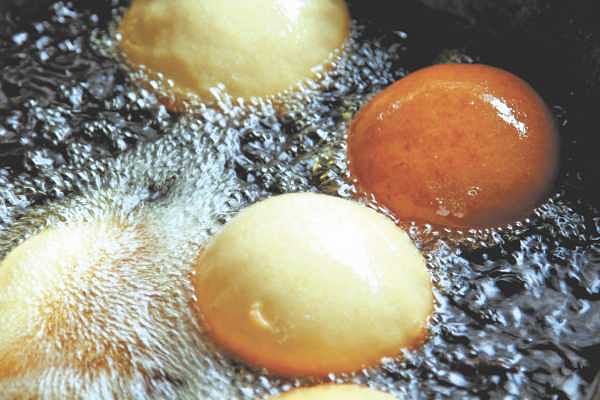
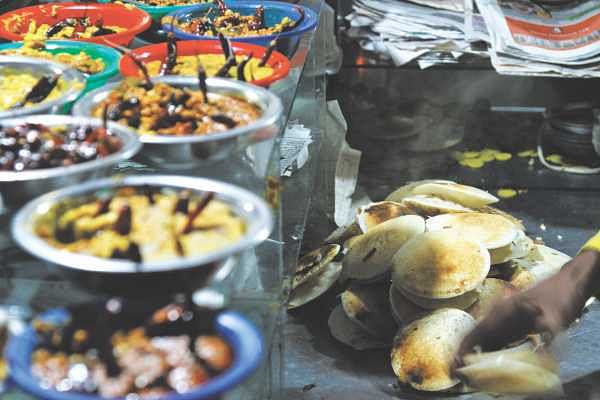
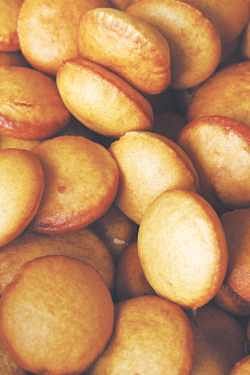
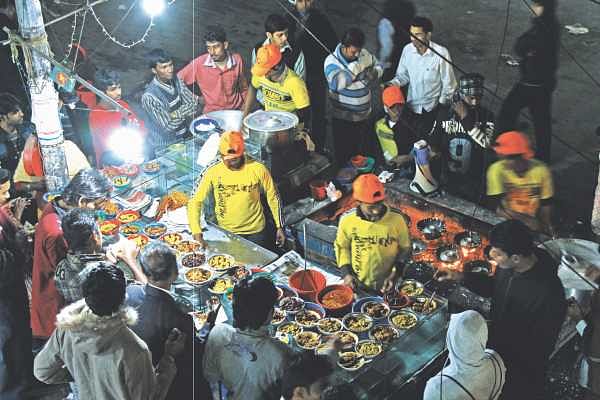
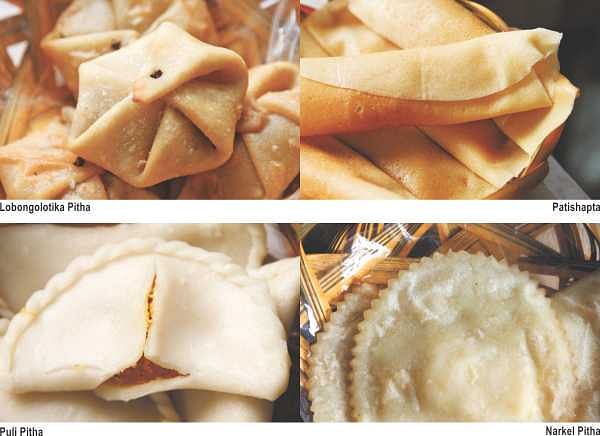
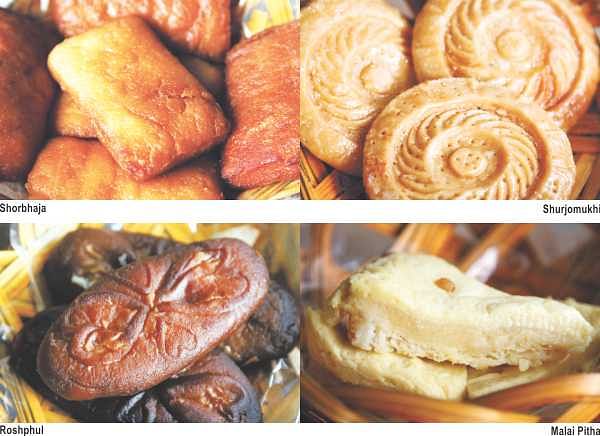
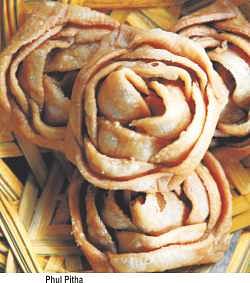 Hamid used to prepare egg-chitoi and chhita pitha for breakfast regularly during the winter season; however, this tradition too, has changed recently. “Why go through the trouble of making them at home when I can get them in almost every super market? They have pithas in Agora and Meena Bazaar and they're really good. People are too busy to make pithas these days. Even in the villages. My grandmother has stopped making them too; she gets them from the village market.”
Hamid used to prepare egg-chitoi and chhita pitha for breakfast regularly during the winter season; however, this tradition too, has changed recently. “Why go through the trouble of making them at home when I can get them in almost every super market? They have pithas in Agora and Meena Bazaar and they're really good. People are too busy to make pithas these days. Even in the villages. My grandmother has stopped making them too; she gets them from the village market.”